
Cultural Heritage, Tourism, and Handicrafts Minister Ali-Asghar Mounesan inaugurated a hotel and two traditional guesthouses during his visit to the central city of Kashan on Tuesday. A budget of five trillion rials ($119 million at the official exchange rate of 42,000 rials per dollar) has been allocated for the establishment of the hotel, which is estimated to generate 120 job opportunities, CHTN reported. The total budget for traditional guesthouses also amounts to 170 billion rials ($4 million), the report added. The guesthouses are expected to create 40 new jobs as well. There is an additional 160 beds to the hospitality sector in the city with the inauguration of the accommodation centers. Kashan is a historical city near Isfahan in the central part of Iran. Its history dates back to over ten thousand years ago, and it is home to some of the most beautiful buildings featuring Islamic architecture. Many travelers opt to pass Kashan on their journeys between Tehran, Isfahan, Shiraz and Yazd, because this delightful oasis city on the edge of the Dasht-e Kavir, is one of Iran’s most alluring destinations. Kashan not only boasts a cluster of architectural wonders, an atmospheric covered bazaar, and a UNESCO-recognized garden, but it also offers some of central Iran’s best traditional hotels. The annual Golab-giri (rosewater distillation) ceremony of Kashan attracts huge crowds to the city every year. Some of the most ancient traces of civilization have been discovered near Kashan, at the Sialk archeological site.
Create: Mar 2, 2021 Edit: Mar 6, 2021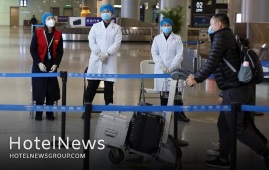
On Sunday, Mohammad Hassan Zibakhsh, the spokesman of Iran's Civil Aviation Organization (CAO), announced that all flights to and from 32 countries have been suspended due to the latest decision of the National Headquarters for Coronavirus Control, IRIB reported. The new restrictions also limit travels between the Islamic Republic and England, Angola, Bolivia, Botswana, Burundi, Cape Verde, Chile, Colombia, Democratic Republic of the Congo, Ecuador, Eswatini, French Guinea, Lesotho, Guyana, Malawi, Mauritania, Mauritania, Rwanda, Sicily, Suriname, Tanzania, Uruguay, Venezuela, and Zambia. Regarding the admission status of travelers from countries with special conditions, the official said: “For direct or indirect flights to Iran, passengers, who have stayed in one of the cited countries for more than four hours within a maximum of two weeks before the date of travel, will not be able to enter the Islamic Republic of Iran until further notice.” Earlier this month, Iran announced it would reduce the validity of negative COVID-19 PCR test results from 96 hours to 72 hours for inbound and outbound passengers. The new regulation replaced a role that required to bar passengers from boarding if they do not have a negative COVID test within 96 hours of departure. All passengers are subject to the medical screening on arrival, and if they are suspected of having the disease, non-Iranian nationalities will be quarantined at a place specified by the Health Ministry at their own expense and Iranian citizens will need to self-isolate for 14 days. The worldwide outbreak of COVID-19 has brought the world to a standstill, and tourism has been the worst affected of all major economic sectors. World tourist arrivals fell by 72% over the first ten months of 2020, according to data compiled by the World Tourism Organization (UNWTO) in December. Restrictions on travel, low consumer confidence, and a global struggle to contain the coronavirus pandemic are amongst factors contributing to the worst year on record in the history of tourism. Iran has also suffered the same fate as its foreign arrivals plunged 72% during the first eight months of 2020 when compared to 2019.
Create: Mar 2, 2021 Edit: Mar 2, 2021
Cultural Heritage, Tourism, and Handicrafts Minister Ali-Asghar Mounesan on Sunday signed a memorandum of understanding (MOU) with Transport and Urban Development Minister Mohammad Eslami to deepen cooperation and expand bilateral ties. The MOU aims at developing maritime tourism and make the best use of its potential in the southern and northern coasts of the country, according to a press release issued by the tourism ministry. Promoting the culture of using the sea as a tool to increase social vitality, development of coastal activities in the form of environmentally-friendly plans and programs, and creating the necessary grounds for cooperation and exchange of knowledge and information were also among the topics of the agreement. The traditional skills of building and sailing Iranian Lenj boats in the Persian Gulf was another issue discussed by the two ministers to find a way to safeguard the endangered UNESCO-registered tradition for future generations. Speaking on the sidelines of the signing ceremony, Mounesan said that the tourism ministry tries its best to leave single product tourism behind and diversify tourism products. A focus on the country’s natural capacities along with the historical and cultural capacities could attract more domestic and foreign tourists as well as create more job opportunities in some deprived areas, he explained. He also expressed hope that constructing seaside hotels on the northern and southern coasts and bringing the international cruise ships would also boost maritime tourism in the country. For his part, Eslami said that having a well-organized program for the development of beaches and the use of marine recreation is a priority for the transport ministry. Over the past couple of years, the Islamic Republic has made various efforts to exploit maritime tourism potential by developing hospitality infrastructures, diversifying sea routes, and drawing private sector investors along its vast southern coasts. Prosperous maritime tourism could help the county to meet its ambitious target of attracting 20 million annual tourists by 2025. It also keeps an eye on tourism developments in the Caspian Sea in the north.
Create: Mar 2, 2021 Edit: Mar 2, 2021
Iran will be developing tourism infrastructure in Hendurabi Island, which is situated west of the touristic Kish Island in the Persian Gulf. “Hendurabi, with an area of about a quarter of Kish, has beautiful beaches and nature. And it has a valuable capacity for the development of travel and ecotourism….It has also enormous capacity to attract large domestic and foreign investors,” Mehr quoted Kish Free Zone Organization Director Gholamhossein Mozaffari as saying on Monday. “A consortium consisting of banks and active holdings in the country is being formed to implement the [already-formulated] comprehensive development plan of Hondurabi,” Mozaffari said. “Kish Island, even during coronavirus pandemic, has enjoyed a tourism boom… [for instance] in the last two months, its occupancy rate of hotels has been 98 percent, which indicates the unique tourism capacity of the region.” When it comes to the southern islands of Iran, people tend to choose Kish, Qeshm, and Hangam Island. However, Hendurabi is just as amazing as these though less known. Being far from the constant visit of tourists, this sort of remote island in the Persian Gulf has preserved many of its natural beauties. It can provide a lot of fun water and beach activities. Swimming, above all, is one of the most pleasant things to do in the crystal waters. Hendurabi is a small island of about 23 square kilometers, located between Kish Island and Lavan Island. It is flat land with no high mountains or hills. The highest point of the island is some 45 meters high. Hendurabi has an old village of the same name. The material used in the construction of houses used to be stone, coral, and stucco. However, some of these houses have been renovated recently. The village also contains a school, shop, and a supermarket. From February to June, the beaches of the island turn to a turtle hatchery. All the turtles of any size go to this area for hatching their eggs. The scenery of turtles being born out of the eggs and running to the water can be one of the most eye-catching moments of your travel. On the other hand, watching the colorful fish while diving is just another fun thing to do.
Create: Feb 24, 2021 Edit: Feb 24, 2021
Iran’s Cultural Heritage, Tourism and Handicrafts Ministry has gained official permission for organizing limited intercity travels during the Iran New Year vacations, which begins on March 21. “We have obtained permission for limited Noruz trips from the National Headquarters for Coronavirus Control,” the deputy tourism minister, Vali Teymouri, announced on Tuesday. With less than a month to go till the start of the Iranian New Year, which has long been associated with millions of domestic travels, the ministry wants to find a way to partially revive the already-slumped travels in the face of the COVID-19 pandemic. “The tourism ministry has held several meetings with the National Headquarters for the Coronavirus Control during with we discussed the issues in detail. Based on our strategies, we proposed two travel models that can be implemented following health protocols in the country,” Teymouri said last week. The first [working] model for travels in the Iranian New Year, proposes travels by the means of package tours. “Throughout package tours, travelers benefit from services provided by the tour and they will stay in authorized accommodation centers [and destinations] which are under the supervision of the Ministry of Cultural Heritage, Tourism and Handicrafts,” the official explained. For the second model, people do not go on tours, but when traveling to their destination city, they must stay in authorized accommodation centers, which are under the supervision of the ministry, to comply with all health protocols and maintain public health, Teymouri stated. Any other form of accommodation would be prohibited to curb the virus, he said. “To help prevent the spread of the coronavirus in Noruz 1400, the establishment of tourist camps, camping, tourists staying in places such as schools, shrines, husseiniyahs, etc. is prohibited, and this issue has been announced to the provincial governors.” The arteria of Noruz travels is expected to be announced in detail during the upcoming exhibition for tourism and handicrafts, which will be held in near future, according to the official. The tourism minister, Ali-Asghar Mounesan, publicized in November that mass, unplanned travels are not approved. “The outbreak of the coronavirus has caused damage to the tourism industry in Iran and [other parts of] the world in such a way that according to statistics, 50 million people are directly and indirectly exposed to unemployment due to the virus spread in the global scene…. yet, mass or unplanned and irresponsible travels are not approved to take place during the coronavirus era.” Smart and responsible traveling should replace "do not travel” recommendations, the minister stressed, adding: “In our country, Corona has caused problems in the tourism industry and the worrying point is the continuation of this trend.” “We are well aware of what the National Headquarters for Coronavirus Control proclaims [the health protocols], hence as a proposal, we have formulated some smart, responsible travel packages by the implementation of which we could have secure travels,” the minister said. He has repeatedly announced that his ministry is in full coordination with the Ministry of Health for strictly implementing health protocols in travel destinations, hospitably centers, and museums, amongst others, underlining that “people’s health is our priority.” Iranians traditionally make hundreds of thousands of domestic trips during the New Year holidays, when most businesses and workplaces are closed, as are schools.
Create: Feb 24, 2021 Edit: Feb 24, 2021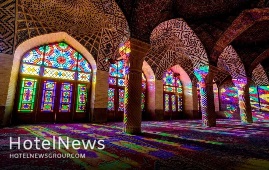
Iran’s tourism industry has suffered a loss of some 220 trillion rials (about $5.2 billion at the official exchange rate of 42,000 rials per dollar) since the outbreak of the coronavirus pandemic, Cultural Heritage, Tourism, and Handicrafts Minister said on Tuesday. “Iran’s tourism has suffered some 220 trillion rials due to corona pandemic so far…. and we hope that with the production of domestic vaccines, tourism will flourish in 1400 [the new Iranian calendar year which begins on March 21],” Ali-Asghar Mounesan said. He made the remarks during the opening ceremony of Tehran’s international tourism and handicrafts fair, which is currently underway at Tehran Permanent International Fairgrounds. “We hope that the widespread vaccine would bring prosperity to all branches of tourism such as agritourism, ecotourism, and nature tourism,” the minister said. “Over 1.5 million jobs have been lost in the tourism sector of Iran due to the COVID-19 disease…. Many of the tourism-insiders are now unemployed or they are staying at home,” Mounesan announced last December. The government had previously allocated a total of 500 trillion rials (about $12 billion) to the corona-affected sectors, of which 200 trillion rials ($4.7 billion) will be given to the health ministry and the rest will be spent on other sectors, he explained. Last month, the minister announced that the national budget bill for the next calendar year (starting on March 20) has proposed 70 trillion rials (about $1.7 billion) to support tourism businesses affected by the coronavirus pandemic. If the budget receives parliament’s approval, it will be injected into different sectors of the tourism industry, which has taken a major hit from the coronavirus outbreak over the previous months, he noted. Despite the toughest economic pressures and sanctions, the government has provided good support to all sectors of tourism, the minister said. However, there is hope that the beginning of mass vaccination against the coronavirus will provide better conditions for tourism and businesses related to this sector, he explained. Government’s care and support packages In late October, the deputy tourism minister, Vali Teymouri, announced that a new support package to pay loans to businesses affected by the coronavirus pandemic has been approved. Depending on the type and activity of the businesses, they could benefit from at least 160 million rials ($3,800) to nine billion rials ($214,000) of bank loans with a 12-percent interest rate, he said. The loans will be allocated to tourist guides, travel agencies, tourism transport companies, tourism educational institutions, eco-lodges and traditional accommodations, hotels, apartment hotels, motels, and guesthouses as well as traditional accommodation centers, tourism complexes, and recreational centers, the official explained. Teymouri pointed to the 1.3 million tourism workers in the country, who are facing several issues due to the coronavirus crisis, and said “This number, in addition to their households, includes a significant population that makes a living through tourism, who are needed to be considered in ministry’s decisions.” Teymouri has said that the tourism ministry has approved a total budget of 4,920 billion rials (over $117 million) to support corona-affected tourism businesses, covering as much as 36,000 people working in the tourism sector.
Create: Feb 24, 2021 Edit: Feb 24, 2021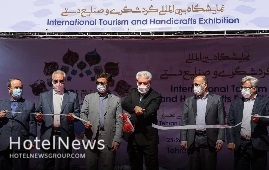
Tehran’s international tourism and handicrafts fair opened to the public on Tuesday in defiance of a government campaign to improve the hugely-battered travel sector in the face of the novel coronavirus. Cultural Heritage, Tourism, and Handicrafts Minister Ali-Asghar Mounesan and his deputies for tourism, and handicrafts were amongst attendees to the opening ceremony of the fair, which is underway at Tehran Permanent International Fairgrounds. Activists, including tour operators, hoteliers, transport businesses, and tour guides, are hopeful that such days would be numbered at the COVID-19 vaccine is getting more widespread. Since it first surfaced late in 2019, the pandemic has created a greater demand for experiences away from crowds, which is opposite to many traveling pillars. Experts say that such preference for solo travel would probably continue till a coronavirus vaccine is ever-present. “Safe and Responsible Travels” has been picked as the motto of the four-day event that according to organizers could help boost synergy among the two sectors as people have a chance to visit them maybe in a day-long visit! The event is being held according to health protocols announced by the National Headquarters for Coronavirus Control, and following the necessary coordination with the relevant agencies in this field, according to Vali Teymouri, the deputy minister for tourism. Travel agencies, airlines, sea or rail companies, entrepreneurs, startups, banks, insurance brokers, agents or hospitals in charge of health, medical tourism, sports clubs, pilgrimage & eco-tourism companies, representatives of hotels, guesthouses, touristic villages, and free zones are amongst exhibitors in the tourism sector. Furthermore, tens of booths and stands in various exhibition halls have been dedicated to craftspeople, artisans, live performers, and tribespeople who are coming together from every corner of the ancient land to promote skills inherited from generation to generation. Though its main goal of the sales exhibit is to make money and sails of the handicrafts, souvenirs, foodstuff, and various other regional products, it can be a venue for dialogue between exhibitors and visitors and even visiting officials, according to organizers. The fair showcase arrays of personal ornamentation, woodwork, illuminated manuscript, miniature, textile printing, enamel, leatherwork, handwoven textile, calligraphy, traditional musical instrument, metalwork, and marquetry among tens of others while nomadic culinary arts, live workshops, and performances that would gather own fans every corner. Iran expects to reap a bonanza from its numerous tourist spots such as bazaars, museums, mosques, bridges, bathhouses, madrasas, mausoleums, churches, towers, and mansions, of which 24 being inscribed on the UNESCO World Heritage list. Under the 2025 Tourism Vision Plan, it aims to increase the number of tourist arrivals from 4.8 million in 2014 to 20 million in 2025. So it will undeniably try its best to achieve a relatively ambitious goal but when that happens the travel industry is likely to look more altered.
Create: Feb 24, 2021 Edit: Feb 24, 2021
A total of six tourist complexes are under construction in northwestern Ardebil province, the provincial tourism chief has said. “With private sector investment, three complexes in Sarein and three complexes in Meshkinshahr are being built,” CHTN quoted Nader Fallahi as saying on Monday. A budget of 4.3 trillion rials ($102 million at the official exchange rate of 42,000 rials per dollar) has been allocated to the projects, some of which are complete by 70 percent, the official added. The projects are expected to generate over 340 job opportunities as well as attract more tourists and travelers to the region after the coronavirus crisis comes to an end, he explained. Earlier in January, the official announced that more than 150 tourism-related projects are underway across the province although the COVID-19 pandemic has brought travel and tourism to a near-standstill. He also noted that the projects would prepare the province’s tourism sector for the post-coronavirus era when the number of tourists and travelers is expected to rise magnificently. Last April tourism authorities of the province announced that they have developed extensive plans to draw more tourists during the winter season to the province and make it the winter tourism hub of the country. Back in November Cultural Heritage, Tourism, and Handicrafts Minister Ali-Asghar Mounesan said that investment in the tourism sector and boosting tourism infrastructure hasn’t stopped despite the outbreak of the coronavirus in the country. Over the past years, a large number of tourism projects have been commenced across the country, some of which have come on stream, he added. This volume of investment indicates that investors have high hopes for the future of this industry in the post-coronavirus era and for the next years to come, the tourism minister said. Sprawling on a high, windswept plateau, Ardebil is well-known for having lush natural beauties, hospitable people, and its silk and carpet trade tradition. It is also home to the UNESCO-registered Sheikh Safi al-Din Khanegah and Shrine Ensemble. The province is very cold in winter and mild in summer, attracting thousands every year. The capital city of Ardebil is usually recorded as one of the coldest cities in the country in winter.
Create: Feb 22, 2021 Edit: Feb 24, 2021
Iranian tourism minister Ali-Asghar Mounesan and his deputy for handicrafts, Pouya Mahmoudian, honored some exemplary crafters and artisans on Saturday. Behruz Zarindashti in ceramic and Sara Hedayat in costume designing received Silver Cypress, during the closing ceremony of the 5th Fajr national handicrafts festival, one of Iran’s major crafts shows held in the National Museum of Iran. Furthermore, Zeinab Masudi in illumination, Abbas Jalalikia in woodwork, Saru Moqerchian in metalwork, and Vajiheh Sadat Jalali in woodcarving received honorable mentions, according to organizers. Two the recently-deceased veteran crafters; Ahmad Shishegar, who was a master of tilework, and Amir Saeim, a master of toreutics, were honored posthumously during the ceremony, which was attended by tens of artists, crafters, and cultural officials as well. Over 150 crafters practicing different fields of handicrafts participated in this edition of the festival, of which several were honored during the ceremony. This edition of the festival, which brings together works from all over the country and is a venue for showcasing tens of ancient and modern Iranian handicrafts, was held entirely online due to the coronavirus outbreak. The event showcased woodwork, illuminated manuscript, miniature, textile printing, enamel, leatherwork, calligraphy, metalwork, mirrorwork, and marquetry, among others. It also featured potteries, ceramics, personal ornamentation, rugs, and kilim carpets. With 14 entries, Iran ranks first globally for the number of cities and villages registered by the World Crafts Council, as China with seven entries, Chile with four, and India with three ones come next. In January 2020, the cities of Shiraz, Malayer, and Zanjan and the village of Qassemabad were designated by the WCC- Asia Pacific Region, putting Iran’s number of world crafts cities and villages from ten to 14. Shiraz was named a “world city of [diverse] handicrafts”. Malayer was made a global hub for woodcarving and carved-wood furniture. Zanjan gained the title of a “world city of filigree”. And Qassemabad village, which is nationally known for its traditional costumes, was also promoted to a world hub of handicrafts. Chador Shab, a kind of homemade outer-garment for women, was, however, the main subject for the WCC assessment for the village. Iran exported $523 million worth of handicrafts during the calendar year 1398 (ended March 19, 2020). Of the figure, some $273 million worth of handicrafts were exported officially through customs, and about $250 million was earned via suitcase trade (allowed for customs-free and tax-free transfer) through various provinces, according to data provided by the Ministry of Cultural Heritage, Tourism and Handicrafts. Ceramics, pottery vessels, handwoven cloths as well as personal ornamentations with precious and semi-precious gemstones are traditionally exported to Iraq, Afghanistan, Germany, the U.S., the UK, and other countries.
Create: Feb 22, 2021 Edit: Feb 22, 2021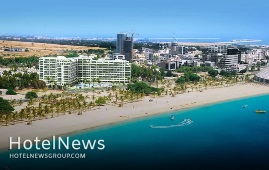
The country’s largest beach park is planned to be established in the Persian Gulf island of Kish, southern Iran. Hundreds of hectares of coastal lands on Kish Island have been ratified to be turned into a beach park, which would be the largest of its kind in the country, the CEO of Kish Civil, Water, and Urban Services Abolfazl Tayyebi said on Saturday. One of [public] benefits from the implementation of this project is that some 388,000 square meters of valuable beaches will not be ceded to the private sector, the official added. In many cities and countries of the world, nowadays, most of the beaches are owned by individuals and the private sector, and due to construction near the sea, they are out of reach of people and tourists, the official explained. With such a project and establishing facilities for the public on the island’s coastline, no one could encroach on this precious treasure that belongs to all Iranians, he noted. Amongst the Persian Gulf islands, Kish is the more luxurious and developed. Except for its unique nature such as waters and shallow beaches, the tourist attractions of this charming island are due to its rich historical background as well as kind and hospitable people. About one million foreign and domestic tourists travel to the island every year and it is one of the most popular tourist destinations in Iran as it has magnificent attractions such as Kariz Underground City, Harireh Ancient City, Greek Ship, and Grand Recreational Pier to name a few.
Create: Feb 21, 2021 Edit: Feb 21, 2021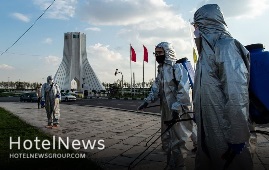
The number of foreign visitors to Iran plunged 94% in the first nine months of the current Iranian calendar year (started March 20, 2020), from a year earlier, government data showed on Wednesday, as the coronavirus pandemic takes a heavy toll of the tourism industry. “Some 450,000 foreign travelers arrived in Iran for mainly medical or trade purposes during the first nine months of the year… tightened measures to tackle the new coronavirus has reduced international travel to the country by 94 percent,” Vali Teymouri, the deputy tourism minister, announced on Wednesday. The global tourism industry has been plagued by the outbreak of the coronavirus for more than a year, which is a record in the history of this industry, the official noted. In an interview with the Tehran Times, the official noted: “We need to revise marketing strategies, and to redefine tourism products by paying great attention to nature tours, rural tourism, and ecotourism, agricultural tourism as a tool to empower local communities and travel businesses.” The coronavirus epidemic has ruined more than 1.5 million jobs in Iran’s travel sector, tourism minister Ali-Asghar Mounesan said in December. “Over 1.5 million jobs have been lost in the tourism sector of Iran due to the COVID-19 disease…. Many of the tourism-insiders are now unemployed or they are staying at home,” Mounesan said. The county’s travel sector has suffered a loss of 140 trillion rials (some $3.3 billion at the official rate of 42,000 rials) since the outbreak of the coronavirus pandemic till the end of Shahrivar (Sep. 21), the official added. Mounesan publicized last November that mass, unplanned travels are not approved, adding: “The outbreak of the coronavirus has caused damage to the tourism industry in Iran and [other parts of] the world in such a way that according to statistics, 50 million people are directly and indirectly exposed to unemployment due to the virus spread in the global scene…. yet, mass or unplanned and irresponsible travels are not approved to take place during the coronavirus era.” Smart and responsible traveling should replace "do not travel” recommendations, the minister stressed, adding: “In our country, Corona has caused problems in the tourism industry and the worrying point is the continuation of this trend.” Tourism [industry of Iran] was growing before the corona [outbreak], its revenues reached $11.7 billion in 2019, which accounted for 2.8% of GDP, near the average share of tourism in the world GDP, which was 3.2 percent, the minister explained. He said 8.7 million foreign nationals visited Iran during the past [Iranian] year (1398), adding that Iran was ranked as the second fastest-growing country in tourism based on data compiled by the World Tourism Organization. “On the onset of coronavirus, tourism faced a sharp decline in the world including our country. So that in the first three months of the current [Iranian] year the number of foreign tourists dropped to 74 --- it was reached almost zero!.”
Create: Feb 20, 2021 Edit: Feb 20, 2021
With a month to go till the start of the Iranian New Year, which has long been associated with millions of domestic travels, the Iranian tourism minister wants to find a way to partially revive the already-slumped travels in the face of the COVID-19 pandemic. “The tourism ministry has held several meetings with the National Headquarters for the Coronavirus Control during with we discussed the issues in detail. Based on our strategies, we proposed two travel models that can be implemented following health protocols in the country,” ISNA quoted Vali Teymouri, the deputy tourism minister, as saying on Thursday. The first [working] model for travels in the Iranian New Year, proposes travels by the means of package tours. “Throughout package tours, travelers benefit from services provided by the tour and they will definitely stay in authorized accommodation centers [and destinations] which are under the supervision of the Ministry of Cultural Heritage, Tourism and Handicrafts,” the official explained. For the second model, people do not go on tours, but when traveling to their destination city, they must stay in authorized accommodation centers, which are under the supervision of the ministry, to comply with all health protocols and maintain public health, Teymouri explained. Any other form of accommodation would be prohibited to curb the virus, he said. “To help prevent the spread of the coronavirus in Noruz 1400, the establishment of tourist camps, camping, tourists staying in places such as schools, shrines, husseiniyahs, etc. is prohibited, and this issue has been announced to the provincial governors.” The arteria of Noruz travels is expected to be announced in detail during the upcoming exhibition for tourism and handicrafts, which will be held in near future, he said. Cultural Heritage, Tourism and Handicrafts Minister Ali-Asghar Mounesan publicized in November that mass, unplanned travels are not approved. “The outbreak of the coronavirus has caused damage to the tourism industry in Iran and [other parts of] the world in such a way that according to statistics, 50 million people are directly and indirectly exposed to unemployment due to the virus spread in the global scene…. yet, mass or unplanned and irresponsible travels are not approved to take place during the coronavirus era.” Smart and responsible traveling should replace "do not travel” recommendations, the minister stressed, adding: “In our country, Corona has caused problems in the tourism industry and the worrying point is the continuation of this trend.” “We are well aware of what the National Headquarters for Coronavirus Control proclaims [the health protocols], hence as a proposal, we have formulated some smart, responsible travel packages by the implementation of which we could have secure travels,” the minister said. He has repeatedly announced that his ministry is in full coordination with the Ministry of Health for strictly implementing health protocols in travel destinations, hospitably centers, and museums, amongst others, underlining that “people’s health is our priority.” Tourism [industry of Iran] was growing before the corona [outbreak], its revenues reached $11.7 billion in 2019, which accounted for 2.8% of GDP, near the average share of tourism in the world GDP, which was 3.2 percent, the minister explained. Iranians traditionally make hundreds of thousands of domestic trips during the New Year holidays, when most businesses and workplaces are closed, as are schools.
Create: Feb 20, 2021 Edit: Feb 20, 2021